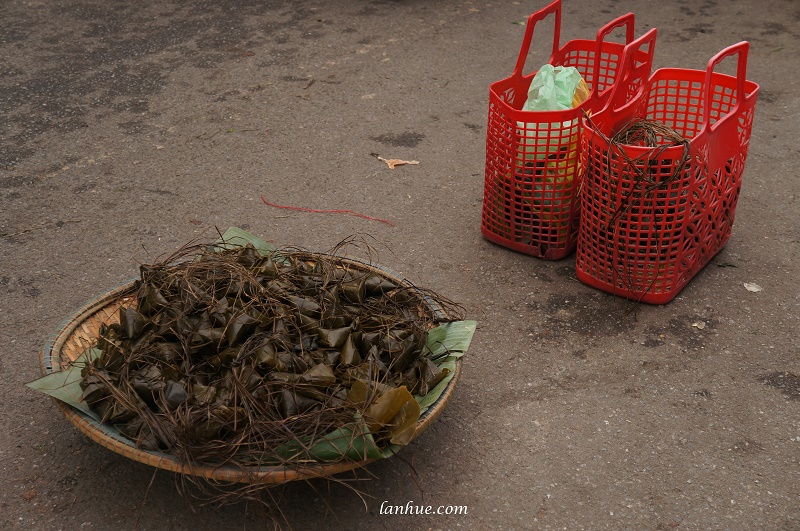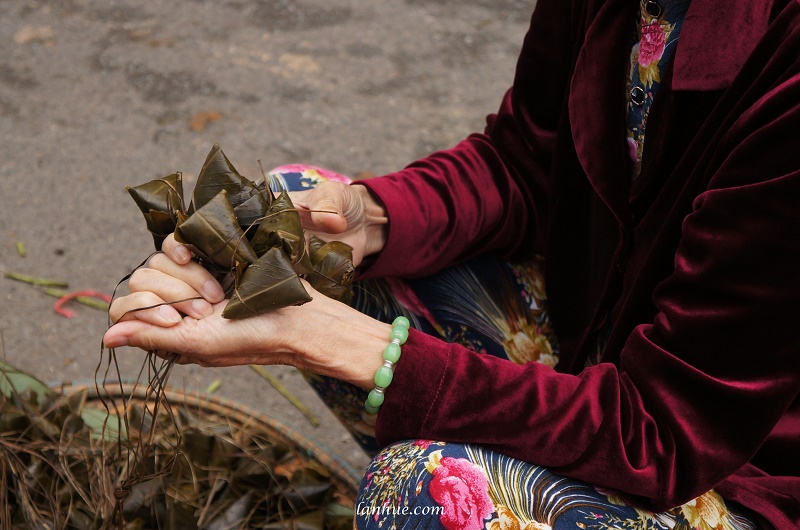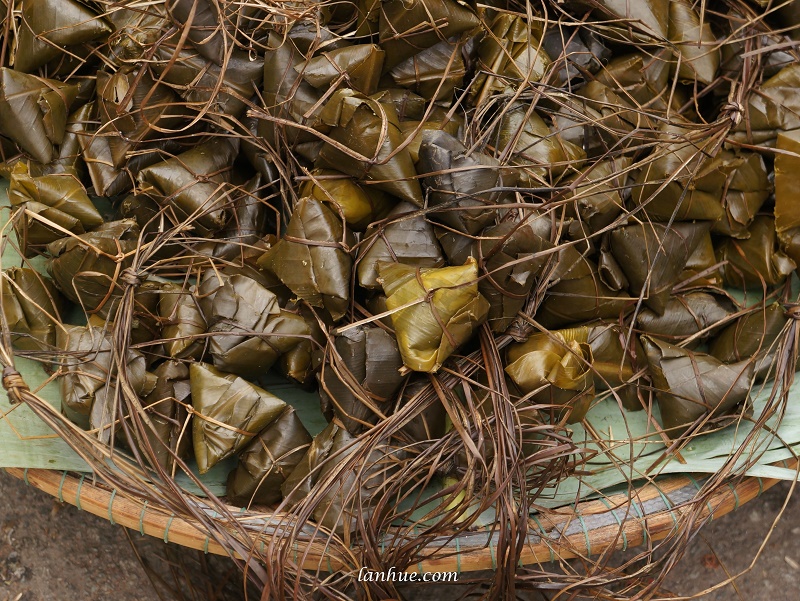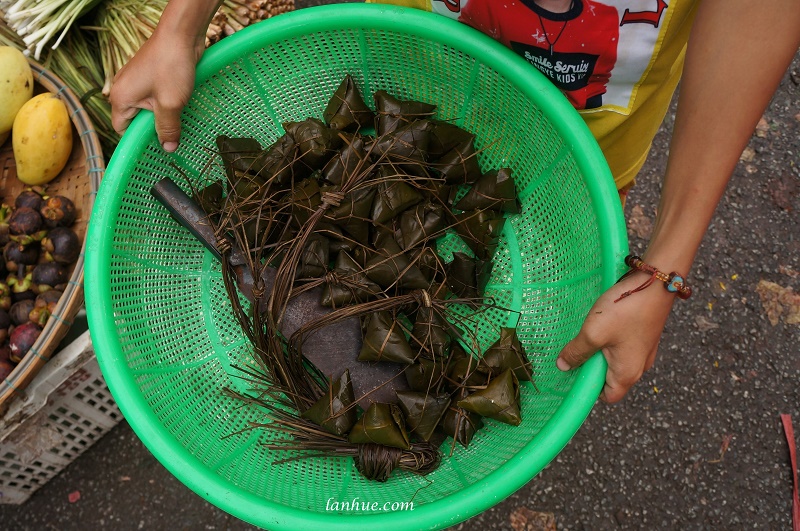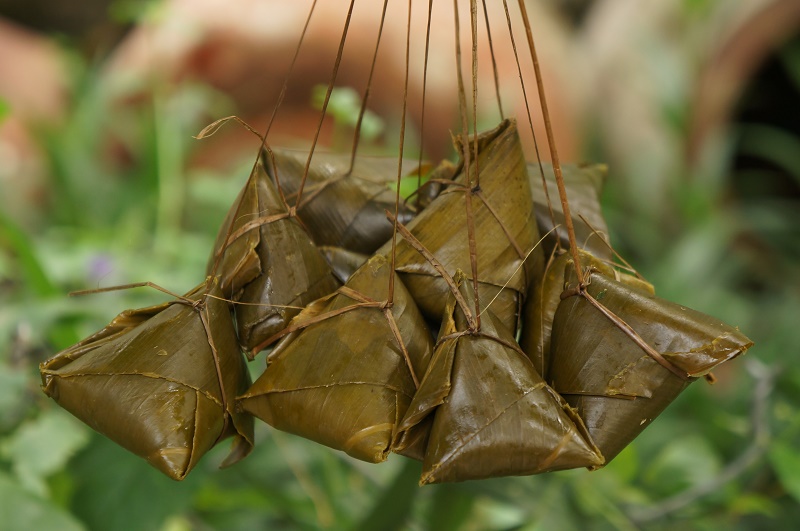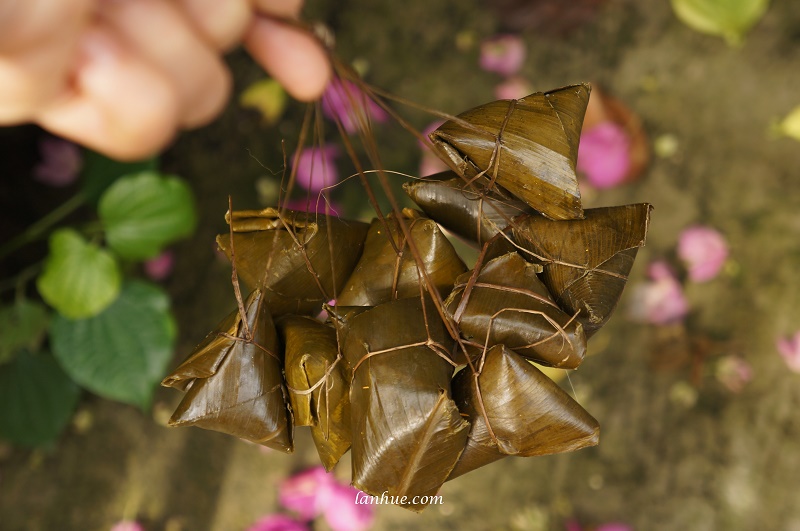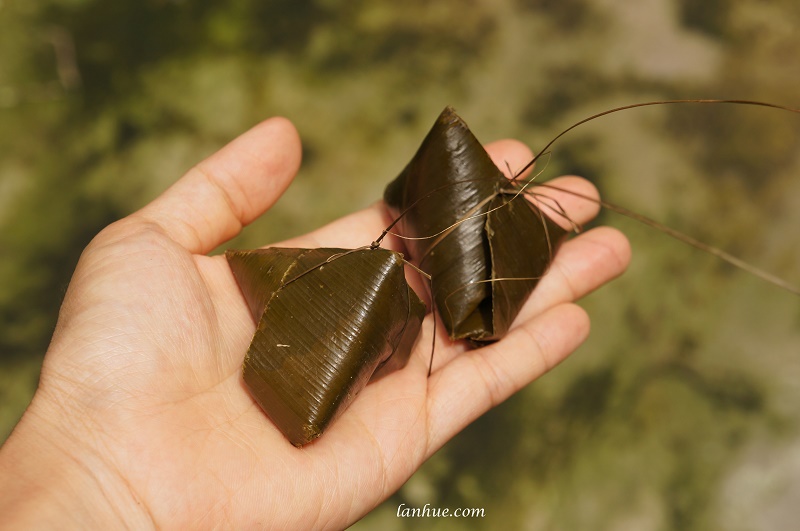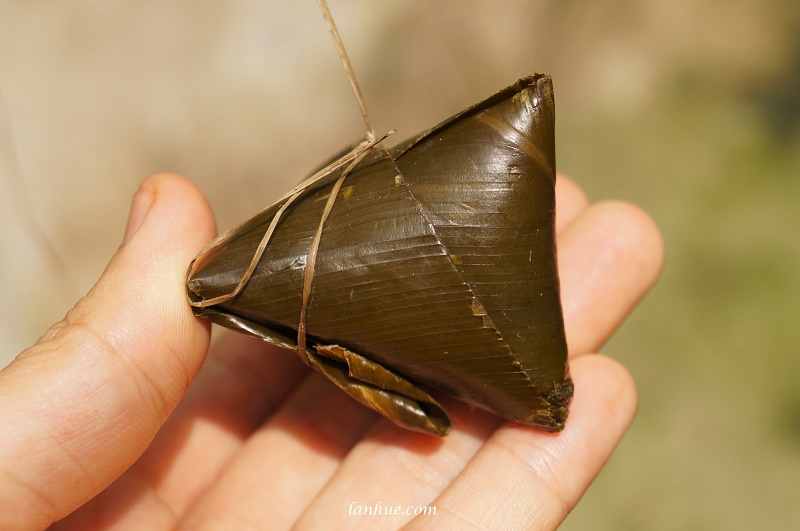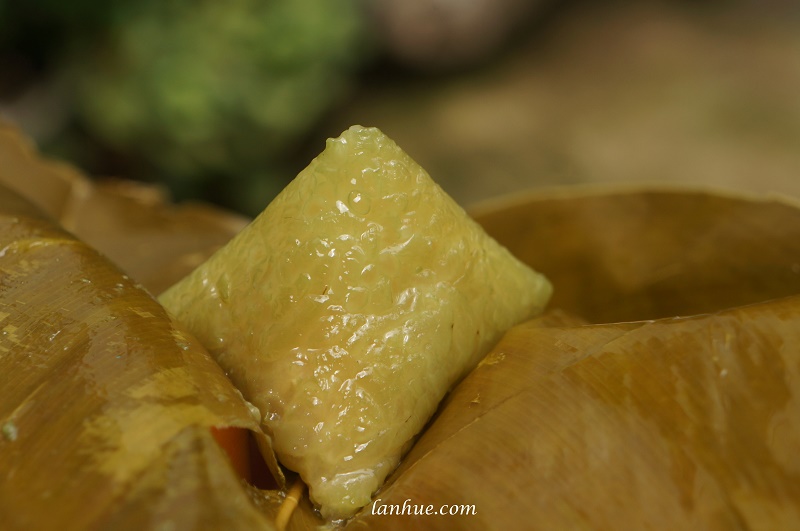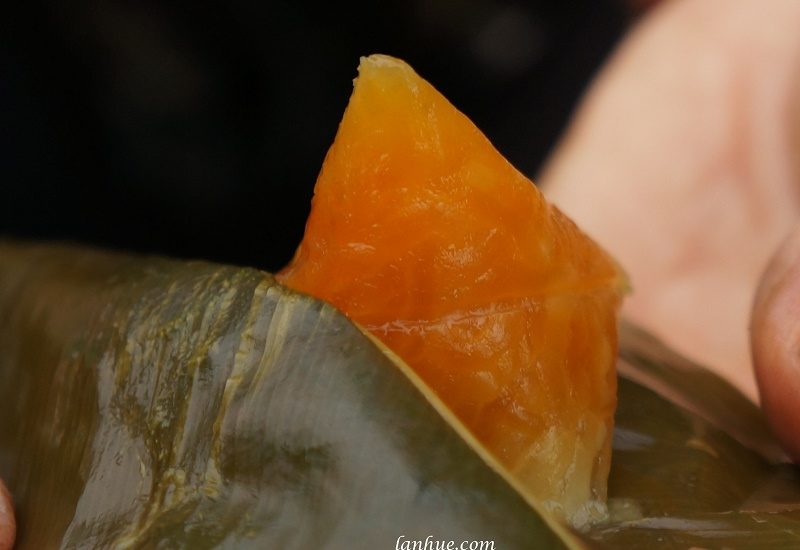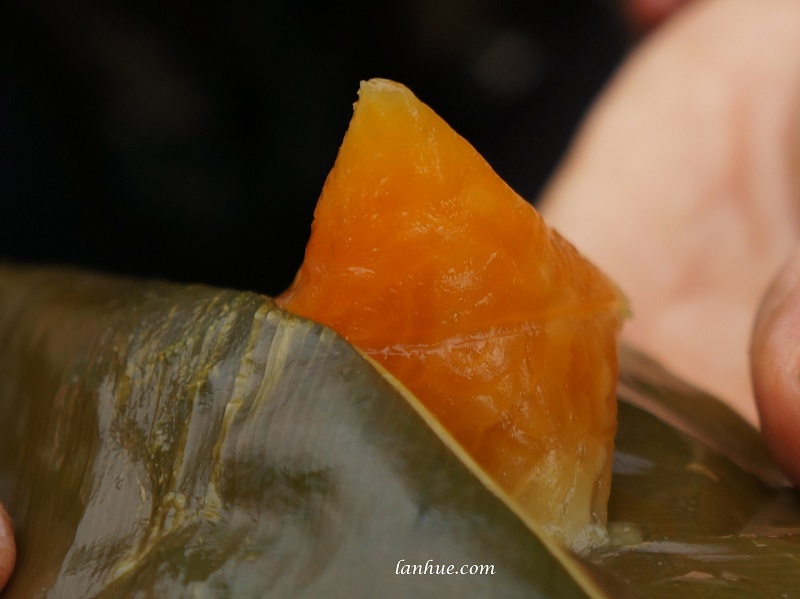
In Huế, bánh ú tro only appears once a year on Tết Đoan Ngọ (Duanwu Festival) which is on the fifth day of the fifth month according to lunar calendar. People buy it to offer to their ancestors on this special occasion. It is sold at Đông Ba Market or other traditional markets from early morning until around 10 am.
Bánh ú tro has the shape of a pyramid and is wrapped in arrow-root leaves. It’s also steamed like bánh chưng but in shorter time. I love how they sell bánh ú tro in a set of ten which are knotted together by strings of cỏ bàng (a kind of grass called Lepironia articulata). I talked to some bánh ú tro sellers from Thanh Tiên Village this morning and learnt that it was made of sticky rice soaked in ash water. The ash that they said they used to make bánh ú tro was not any kind of ash from burnt firewood but from the fine wood ash in brick kilns.
To tell if it’s a good bánh ú tro, its steamed sticky rice has to be jellylike and have orange color, not green one. It’s sad that I didn’t get what I wanted this year. They showed me a nice sample of bánh ú tro but sold me something else. It was green in color and it was not jellylike as I expected. Perhaps the green ones are the ones whose sticky rice is not soaked in ash water long enough.
Although I console myself that I need to make sure to buy only the ones that they show me next year, my heart still sinks. This is not the side of Huế that I want to see: the ugly one!
